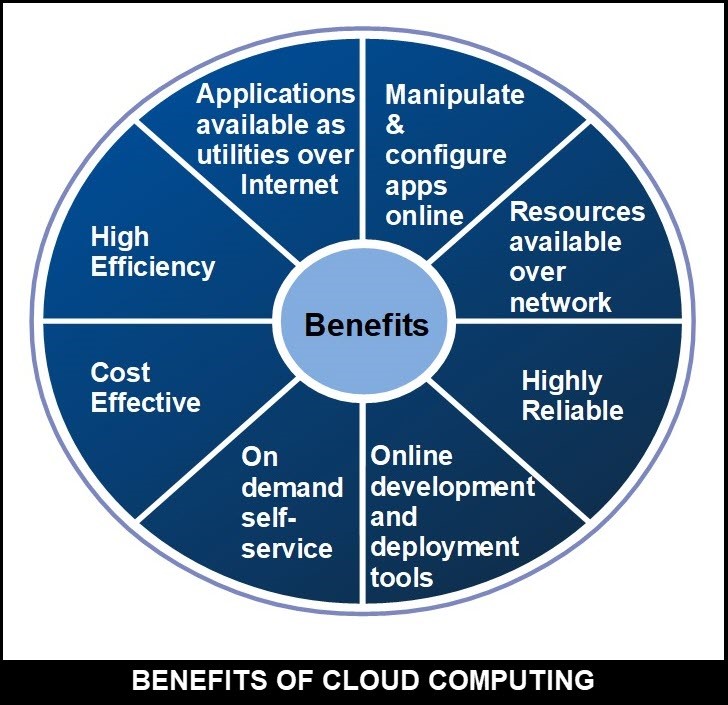
How does Cloud Computing Works?
Let us understand through an example. Assume that you are an executive at an organization where its your responsibility that all employees have the right hardware and software they need to do their work. You have to take care of buying the new computers as well as purchasing software, licenses etc and make them available to employees as and when needed. Whenever there are new joinees, your current license should be able to accommodate a new user. All these tasks can be stressful and involve huge financial cost.
Now instead of installing a suite of software on each computer, you just need to load one application which will allow the employees to login into a Web-based service. which will host all the programs required by the user for his/her task. Remote servers running elsewhere, have the power to run everything from emails to word processing to complex data analysis programs, all due to cloud computing. The only thing the user’s computer will require is to be able to run the cloud computing interface software, which can be a simple Web browser and the rest would be taken care of by cloud.
Characteristics Of Cloud Computing
● Agility: The cloud works in a distributed computing
environment where resources are shared among users and it
works very fast.
● High reliability: The number of servers available are high
and reliable and there is reduced probability of hardware
failures or infrastructure issues.
● High Scalability: Peak loads can be easily managed without
any human intervention as there is “on-demand” provisioning
of resources on a large scale.
● Pay-per-use mode: Application Programming Interfaces
(APIs) are available for users to access cloud services and
pay the charges only for the availed services.
● Shared Resources: With the help of cloud computing,
multiple users and applications can share common
infrastructure which makes the work more efficient and
cost-effective. IT organizations don’t need to set up
their own infrastructure and can pay for the remotely
available resources, according to their usage.
● Device and Location Independence: Cloud computing allows
the users to access resources , regardless of their location
or what device they use. As infrastructure is remote and
accessed via the Internet, users can connect from anywhere.
Advantages of Cloud Computing
● No need for a high configured machine
You don’t require a high configuration computer to run
web-based applications because applications run on cloud,
not on your local machine.
● Lower IT infrastructure cost
There is no need to invest in a huge number of powerful
servers or the IT staff for maintenance of the same.
● Reduced software-related costs
The need to buy separate software packages for each machine
in the organization, is eliminated in the cloud computing
scenario. Another advantage is that users don’t face
issues due to obsolete software or bear high software
upgradation costs. Since the update happens automatically,
they are available to the user when he logs in the next
time.
● Increased computing power
Since, the execution capacity of cloud servers are very
high, the application performance is extremely fast.
● Unlimited storage capacity
There is a huge amount of storage capacity like 2000 GB or
even more if required, available on cloud.
Disadvantages of Cloud Computing
● Require a constant high-speed Internet Connection
A constant high speed network is a must to avail the
benefits of cloud computing.
● Data Security
With cloud computing, all your data resides on the cloud.
This imposes a huge security risk due to unauthorized
access.
Professionals with big data,
DevOps and data analytics skills are not just living
their dream by chasing what they love to do, they
are in high demand as well – with their
average salary meeting a sharp hike every year. Why
not chase a dream job and be in demand? All it
begins is with a professional course available with
Cloud
Training. Try today!


 Workshop
on Certified DevOps Foundation
Workshop
on Certified DevOps Foundation Workshop
on Certified DevOps Professional
Workshop
on Certified DevOps Professional Get
DevOps Certified
Get
DevOps Certified